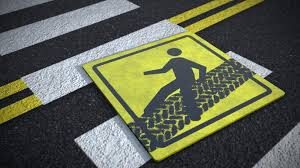STAYING SAFE – PEDESTRIAN ALERT


Every two hours, a pedestrian is killed in a traffic crash. This is a sad but true national statistic.
The good news is that traffic accidents and fatalities have declined. But pedestrian accidents have actually increased. This could be in part due to the fact that more people are walking, whether it be to get exercise or to save gas money. And another contributing factor could be the sheer fact that our cities and towns are getting more and more populated. In 2011, pedestrians made up 14% of our national traffic fatalities. This information is provided by the National Highway Traffic Safety Administration. The statistic about one person dying every two hours is partnered by the injury statistic: One person every eight minutes is injured in a pedestrian accident. Also in 2011, 21% of children who died in traffic accidents were not in a vehicle—they were pedestrians. These are children aged 10 to 15.
The total number of injuries each year in the US for pedestrians is between 68,000 and 75,000 per year. This has spurred national interest and an attempt by the federal government to reduce pedestrian fatalities. It’s interesting to note that they have provided $2 million in grant money to be divided among 22 cities where pedestrian accidents are the highest. This is for each city to implement safety initiatives. It’s not much money per city, and more is needed.
Why are there so many pedestrian’s hits by vehicles? Part of the problem is distracted driving. If you think about it, we have far more distractions in our vehicles than ever before in history. Consider that we have GPS, computers, XM radio, cell phones, Bluetooth, and all the technology that’s all around us in our car…which we do use and tinker with why we are driving. This makes us less likely to notice pedestrians. So the first guideline in this article is to do your best to be fully aware of your surroundings when driving, paying attention to the road and what’s on the sides of the road. Ignore your phone until you reach your destination and resist the urge to fiddle with computer settings, music channels and such. Each second or two that you do these things, your eye is off the road. That is all the time it takes to drift slightly out of your lane and into a person, bicyclist or any hazard.
There are things that we can do to make ourselves less likely to be in a pedestrian car accident—not only as drivers but as pedestrians. These may seem obvious but yet people typically do not always do them. For example: use the crosswalk! How often do you see people darting across a busy road when they are not at an intersection? You probably have done this yourself. But you should make a vow to never do it again especially if you are walking with children or seniors who could trip or fall. Always use the crosswalk and wait for the proper signal before you cross.
Obey the laws, obey the signals, but even so—you should still look both ways because you never know what distracted drivers are going to do.
Here’s another safety rule to follow that you may not like. Don’t listen to music when walking or jogging. Of course, it’s nice to do this and many people walk with headphones/ headsets or earplugs in their ears that link to their music player. The problem is that this decreases your chances of hearing an oncoming vehicle. You may even not here a car horn, depending on how loud your music is playing. Even at low volume, it is still a risk. Your best bet for safety is to only listen to the world around you and never take walks or runs with music playing.
Another unpopular rule but one that we must recommend is to not look at or use your cell phone when you are walking. Especially if you are crossing the street. It is very easy to be distracted by text messaging or a phone conversation and not notice a car that has quickly rounded a corner or possibly even swerved out of their lane. In the blink of an eye, while you are looking at your phone, someone could be running into you. It simply isn’t worth it. If you must use your phone wait until you are safe across the road and then stop in a safe spot to talk or text. Absolutely do not use your phone while driving. This too causes deaths and injuries every day since phones became popular.
Here is another obvious safety tip but again, it is often ignored. You should wear brightly colored clothing every time you take a walk, regardless of how busy or not busy, the roads are. Bright clothing helps drivers to see you. If you are walking after dusk, you should not only wear light and bright clothing but also something reflective. Have a reflective patch (or tape) on your jacket or even a blinking light. Small blinking lights that clip onto your jacket or pants are inexpensive and could save your life.
Another important rule: always walk as far from the lane of traffic as possible. Have you ever seen people walking along the road’s edge when they could be walking on the sidewalk or the grass beside the road? Why do people do this? Because they don’t realize the danger. They are not thinking about their risk of getting hit by a vehicle. Avoid walking on roads without sidewalks or berms- do not place yourself in harm’s way.
We will end by saying that alertness pays. Whether driving or walking, simply staying focused and being aware of your surroundings at all times will greatly increase your chances of staying safe and not being involved in a horrible accident. Nobody ever thinks these things will happen to them. We venture out and we walk around parking lots and streets and we don’t think twice about what could happen to us. But keeping these safety tips in mind always and sharing them with your family could mean the difference between life and death. Thank you for reading this important safety message from our law firm.




